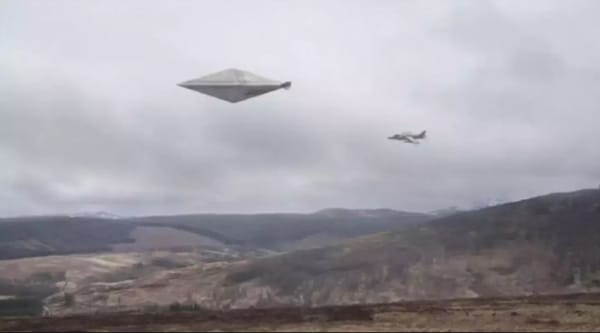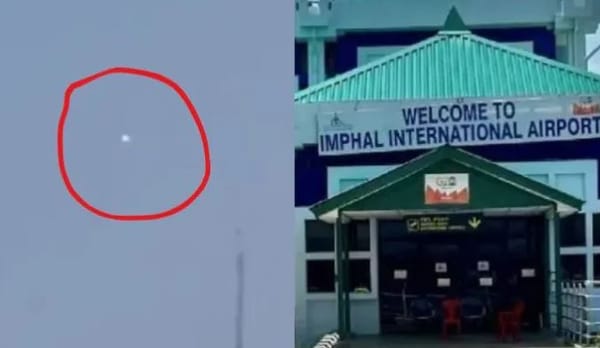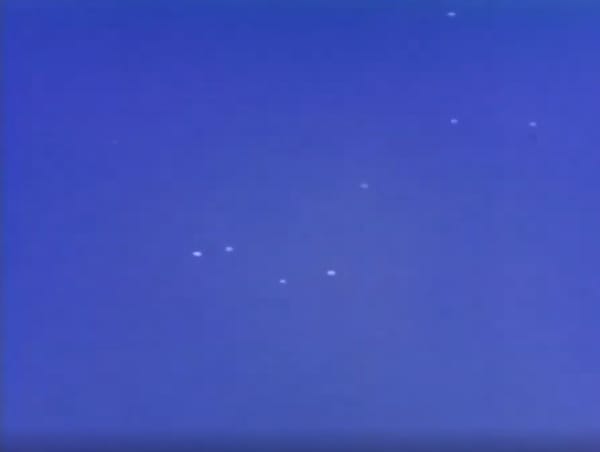The 1964 Lonnie Zamora Incident

The Lonnie Zamora incident, which occurred on April 24, 1964, near Socorro, New Mexico, remains one of the most intriguing and controversial UFO sightings in modern history. This event involved Socorro Police Officer Lonnie Zamora, who reported observing a shiny, unidentified object that he initially mistook for a crashed vehicle. The object, described by Zamora as having a roaring blue and orange flame beneath it, reportedly lifted off the ground and departed at high speed, leaving behind a site of burned brush and disturbed ground.
The case attracted significant attention from news media, UFO investigators, and governmental agencies, including the U.S. Air Force’s Project Blue Book, which ultimately classified the sighting as "unknown." The incident has been subject to various interpretations and theories, including suggestions that it was related to experimental military technology or a student prank. Despite these theories, the event's authenticity remains a topic of debate, and the case continues to be a focal point for discussions on UFO phenomena.
This article delves into the details of the Lonnie Zamora incident, exploring the eyewitness account, subsequent investigations, and the various explanations proposed over the years. Through this examination, we aim to shed light on one of the most enduring mysteries in UFO lore and understand the impact it has had on both public perception and the field of ufology.
The Incident
On April 24, 1964, at approximately 5:45 p.m., Socorro Police Officer Lonnie Zamora encountered an extraordinary event near Socorro, New Mexico, which has since become a notable case in UFO history.
Initial Observation
The incident began when Officer Zamora was pursuing a speeding vehicle south of Socorro. During the pursuit, Zamora reported hearing a "roar" and seeing a "flame" in the sky to the southwest. Concerned that a local dynamite shack might have exploded, Zamora abandoned the pursuit to investigate the source of the disturbance.
Zamora drove towards the area where he had seen the flame and discovered what he initially thought to be an overturned white car. However, upon closer inspection, the object appeared unusual and did not match the characteristics of a typical vehicle.
Description of the Object
Zamora described the object as "shiny" and "whitish," with a reflective surface that resembled aluminum but was not chrome-like. The object was reportedly shaped like the letter "O" or an oval, and it was situated on a flat area of land. According to Zamora, there were two individuals standing beside the object, both dressed in white coveralls. The figures were described as having "normal" human proportions but were either small adults or large children.
The Object’s Behavior
The most striking aspect of Zamora's account was the object's behavior. Zamora reported hearing a "roar" and witnessing a blue and orange flame beneath the object. This flame was described as intense and creating a significant amount of heat. The object then rose vertically into the air and quickly moved away from the scene. Zamora observed the object as it ascended and departed at high speed, disappearing into the distance.
Immediate Aftermath
Following the sighting, Zamora reported the incident to his dispatcher, Nep Lopez, who then notified other local law enforcement officials. Zamora led a team to the site where the object was observed. The area showed signs of recent disturbance: patches of burned brush and smoldering grass were noted, suggesting that something had landed and then taken off.
Local law enforcement and investigators examined the site, but no physical evidence of the object was found beyond the burned vegetation and disturbed ground. The lack of debris and definitive traces added to the mystery of the sighting.
Official Investigation
The U.S. Air Force's Project Blue Book, responsible for investigating UFO sightings, took an interest in the Zamora case. Project Blue Book's investigation included interviews with Zamora, analysis of the site, and a review of local reports and weather conditions. Despite thorough examination, Project Blue Book was unable to conclusively identify the object, classifying the case as "unknown."
In addition to Project Blue Book, various UFO investigators and researchers analyzed the case. Their investigations focused on the credibility of Zamora's account, potential explanations, and the physical evidence collected from the site.
Theories and Speculations
Several theories have been proposed to explain the Zamora incident. Some researchers suggested that Zamora might have witnessed a test of a lunar lander or other experimental military technology from the White Sands Missile Range, which is located not far from Socorro. Another theory posited that the sighting could have been a student prank from nearby New Mexico Tech, involving a candle in a balloon or similar device.
Despite these theories, no conclusive evidence has emerged to fully explain the incident, and the case remains a subject of interest and debate within the UFO community.
In summary, the Lonnie Zamora incident is characterized by its detailed eyewitness account, the unusual nature of the observed object, and the subsequent investigations that failed to resolve the mystery. The case continues to be a significant and enigmatic event in UFO history, reflecting the complexities and challenges of understanding unidentified aerial phenomena.
Aftermath
The aftermath of the Lonnie Zamora incident has been marked by a blend of ongoing investigation, public fascination, and varied interpretations. The event not only captured the attention of UFO enthusiasts but also influenced local and national perspectives on unexplained aerial phenomena.
Official Responses and Public Interest
After the incident, the U.S. Air Force’s Project Blue Book conducted an extensive investigation but ultimately classified the case as “unknown,” due to the lack of conclusive evidence and the inability to identify the object observed by Zamora. The case was among several high-profile sightings that contributed to the growing public interest in UFOs during the 1960s.
Zamora’s account was scrutinized by both the media and UFO researchers. The local press in Socorro reported on the incident extensively, and Zamora himself became a subject of significant public and media attention. Despite his desire to maintain a low profile, Zamora was often approached by UFO enthusiasts and investigators seeking more details about his experience.
Theories and Speculations
In the years following the incident, numerous theories emerged attempting to explain what Zamora had witnessed. Some suggested that the sighting was a result of a test of a lunar landing device by the White Sands Missile Range, a military installation known for its experimental projects. This theory was fueled by the proximity of the missile range to Socorro and the advanced nature of the technology that could potentially match Zamora’s description.
Another theory proposed that the incident was a hoax orchestrated by students from nearby New Mexico Tech. This idea was supported by then-President Stirling Colgate, who claimed that the object could have been a simple candle in a balloon. Skeptics like Philip J. Klass further suggested that the sighting was a deliberate attempt to draw attention and increase tourism to the area, though this theory remains contentious.
Local Developments
In 1966, in an effort to capitalize on the public interest generated by the sighting, Paul Ridings, president of the Socorro County Chamber of Commerce, proposed developing the site where Zamora reported his encounter. The idea was to create a tourist attraction that would commemorate the incident. Consequently, stone walkways and steps were built leading to the area, although they were constructed approximately a quarter mile from the actual site due to concerns that the original location might be contaminated with radioactivity.
In 2012, Socorro city officials commissioned a mural by local artist Erika Burleigh to honor the incident and its place in local lore. The mural, located on a spillway facing Park Street, serves as a visual reminder of Zamora's encounter and its impact on the community.
Zamora's Later Life
After the incident, Lonnie Zamora became increasingly disillusioned with the attention and scrutiny he received. He distanced himself from both ufologists and the Air Force, eventually taking a job managing a gasoline station in Socorro. Zamora's frustration with the situation was evident, and he chose to lead a quiet life away from the ongoing UFO debates.
Lonnie Zamora passed away on November 2, 2009, from a heart attack at the age of 76. His death marked the end of a chapter in one of the most intriguing UFO cases, but his account remains a significant part of UFO history.
Legacy and Continued Interest
The Lonnie Zamora incident continues to be a subject of interest for UFO researchers and enthusiasts. It is frequently cited in discussions about credible UFO sightings and remains an important case in the study of unexplained aerial phenomena. The incident’s lasting legacy is reflected in the continued debate over its validity and the ongoing quest to uncover the truth behind Zamora's extraordinary experience.
In conclusion, the aftermath of the Lonnie Zamora incident highlights the complex interplay between public curiosity, official investigations, and personal experiences. The case has had a lasting impact on UFO research and remains a significant and enigmatic chapter in the history of unexplained aerial phenomena.
Conclusion
The Lonnie Zamora incident stands out as one of the most compelling and enigmatic UFO sightings of the 20th century. Officer Lonnie Zamora’s detailed account of a shiny, unidentified object, complete with its startling ascent and mysterious occupants, has captivated both public and scholarly interest for decades. Despite extensive investigations by the U.S. Air Force and numerous theories attempting to explain the event, the true nature of what Zamora witnessed remains unresolved.
The case's significance lies not only in the intriguing nature of Zamora’s observations but also in the impact it has had on UFO research and public perception. The incident prompted a flurry of speculation, from potential military experiments to elaborate hoaxes, and remains a cornerstone of discussions about unexplained aerial phenomena. The diverse theories and ongoing debates reflect the complexity and allure of UFO sightings, where definitive answers are often elusive.
In the aftermath, the incident influenced local developments in Socorro, with efforts to commemorate the sighting through tourist attractions and public art. Lonnie Zamora’s own retreat from the limelight further underscores the personal challenges faced by those at the center of high-profile UFO cases.
As we continue to explore and investigate unexplained aerial phenomena, the Lonnie Zamora incident serves as a reminder of the challenges inherent in seeking the truth. It highlights the need for rigorous investigation, open-minded inquiry, and an acknowledgment of the broader implications of such encounters.
The case remains a poignant example of the enduring mysteries surrounding UFO sightings and the ongoing quest for understanding in the world of unexplained phenomena. While the true nature of Zamora’s experience may never be fully known, its legacy endures as a significant and thought-provoking chapter in UFO history.



